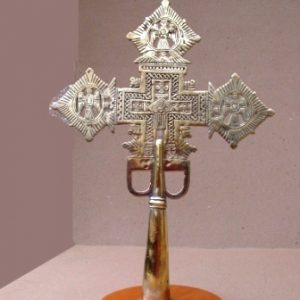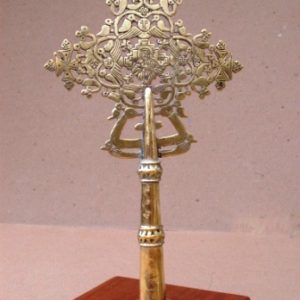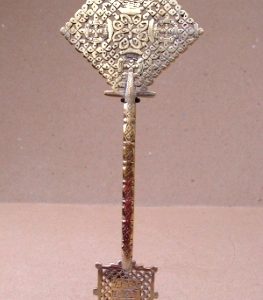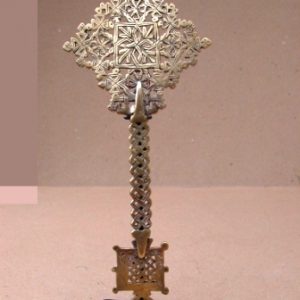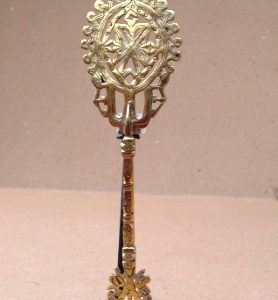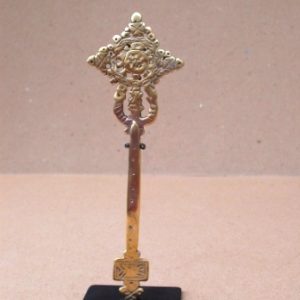The cross as an image of Christianity has been associated with Ethiopia since the Aksumite emperor Ezana adopted the new faith in the 14th Century and issued coins engraved with the symbol that would spread the message.
Several types of crosses were used. Large processional crosses with hollow shafts mounted on a long wooden stick, which date back to the 12th Century are often the property of churches and monasteries.
For the Ethiopian church, the cross is not merely a symbol of Christ’s suffering and death but more importantly a mark of his resurrection.
The cross functions as an icon that conveys the salvation and protective effect of averting evil. Such a function is clearly expressed in the prayer known as “The Rampart of The Cross”
The numerous processional crosses held by priests during religious services and ceremonies also powerfully establish a space of holiness and salvation and act as symbolic markers pointing the way for the faithful.
Processional crosses are mostly made of metal and are usually cast in the lost wax method.
To re-inforce the Christological message of the Ethiopian Church, designs were incised on the cross, communicating well accepted truths and thus increasing the rhetorical power of these holy insignia.
Intricate interlocking designs echo decorative forms found on the screens and friezes of Ethiopian Medieval churches.
For additional literature or information on specific pieces, or inquiries on availability of other pieces, perhaps not viewed in this collection, please contact us.
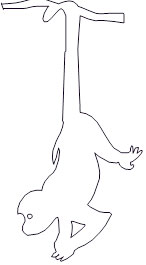
 0 items
0 items 